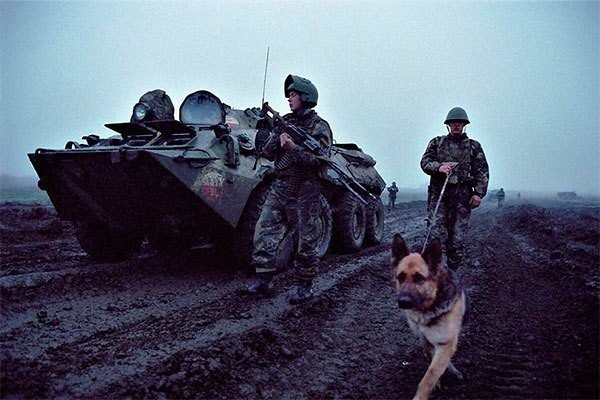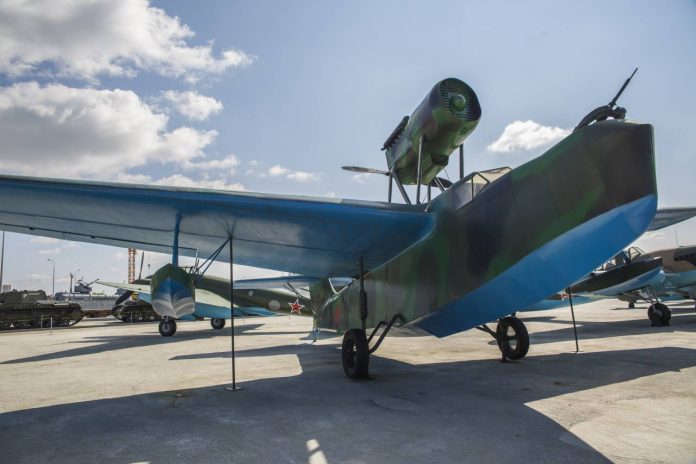
Not so noticeable, but rescued (or carried away) many lives, cars. When you raise the question of flying boats, usually a little lost companion. Maximum, that pops, - a "Catalina". About our heroic "Ambarchik" generally aware unit, but about it is preparing a separate article. And of course, Aviation enthusiasts and fans know about the German boat.
In fact, flying boats were plenty. Not so much, as the seaplanes, but nonetheless. They were, they flew, they contributed to the war. And so - to raise the anchor and on the rise!
1. Berievo MBR-2. the USSR
On the legendary "Ambarchik" I will say briefly, because most article ahead. Unfortunately, the aircraft is out of date long before the outbreak of the Second World War, but alas!, forth to her from the first to the last day.
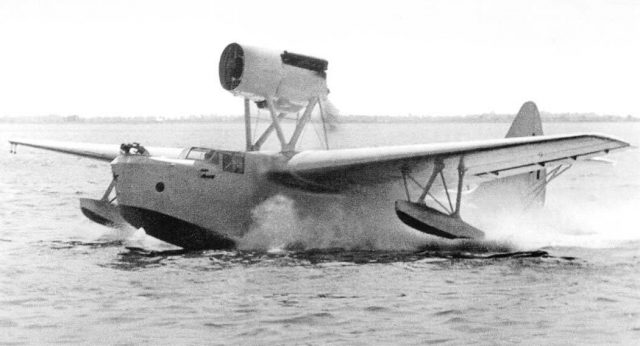
It was the debut aircraft Beriev, the beginning of a long journey just OKB Beriev. For the machine has been selected single-engine cantilever monoplane scheme and dvuhredannoy boats, having a large transverse deadrise.
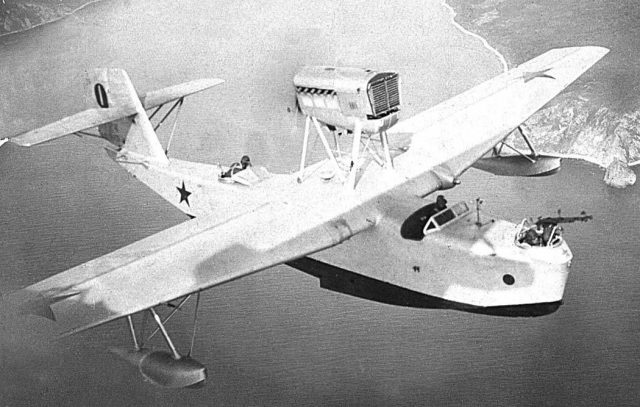
The choice was not random, MBR-2 had good seaworthiness for those times and could take off and land on water with waves up to a meter high. As the power plant planned engine M-27, but as in those days we usually did it with motors, MBR-2 went into production with completely different engines, weaker M-17 and AM-34NB.
anticipated, that the MBR-2 will have an all-metal construction, but Beriev, evaluating the situation with aluminum production in the country, made the plane wooden and as simple as possible. And, the plane turned out to be very technological, from the moment of laying to the flight took place 3 month.
It was worse with equipment for reconnaissance. Many MBR-2 surrendered without radios and aerial cameras, which were sent and installed in parts.
There were a lot of shortcomings. About them at the end, but wanted to mention one. From the front firing point, aimed shooting was possible only up to a speed 200 kmh, further air flow simply did not allow the arrow to work normally, pressing it against the back wall of the cab. Happened, that at higher speeds 200 km / h the plane was generally defenseless in the front hemisphere.
In general, the "barns" were a welcome prey for German fighters in all coastal directions.. Minimum stress - and another victory in your pocket. The plane was extremely defenseless.
These simple, but reliable flying boats became the main seaplanes of the Soviet naval aviation at the beginning of the war. By that time, the MBR-2s were well mastered by the crews of combat units., having received an ironic and affectionate nickname for its angular forms «ambarchik».
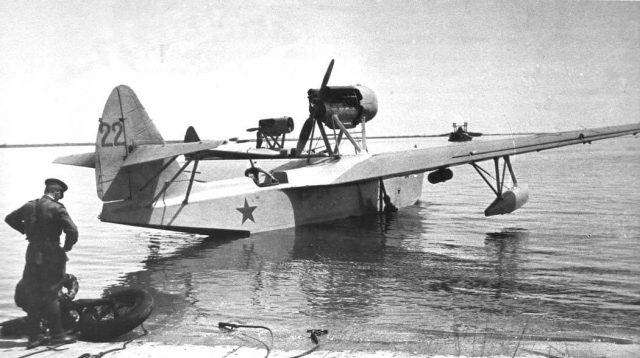
Flying boats were durable and reliable, simple and pleasant to fly, had good seaworthiness and did not cause much trouble to pilots. A simple wooden structure allowed the technical staff to carry out repairs of almost any degree of complexity directly in parts.
However, the tree required special care.. After rolling out the MBR-2 ashore, the boat should have been thoroughly dried., for which various methods were used: hot sand poured into covers, which is applied to damp parts of the aircraft, light bulbs, hot compressed air or a hot water jugs.
And this, already thoroughly obsolete aircraft, I had to carry the cargo of the main sea plane. And, no longer a spy, but in fact a multi-purpose machine.
MBR-2, in addition to reconnaissance and aerial photography, searched for and bombed submarines, attacked enemy ships and ports, took out the wounded, looking for their ships (the same PQ-17), covered their ships (it was totally stupid, so the Black Sea Fleet lost half of the crews).
Sometimes there were very unusual tasks.
In September 1944 g. MBR-2 had to take out the crew of the English «Lancaster», participated in an air raid on a battleship «Tirpitz». When flying from the target to the Yagodnik airfield near Arkhangelsk, the crew did not reach the refueling site and landed their plane on «belly» right into the swamp near the village of Talagi.
To get the English out of this wilderness, I had to parachute the conductor, who led them to the nearest lake, where I expected the MBR-2.
20 October of the same 1944 year, a German seaplane BV.138 made an emergency landing in the area of. Morzhovets. The Germans began to call their own on the radio, but the work of an unknown radio station attracted the attention of our sailors. The MBR-2 that flew into that area discovered its unlucky colleagues and pointed a hydrographic vessel at the BV.138 «haze», which hijacked the plane, and crew.
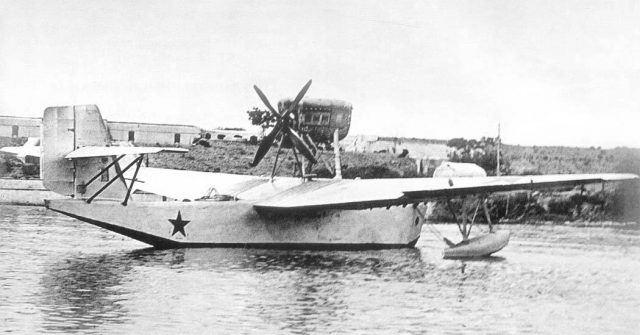
dignity: cheap, manufacturable, multipurpose.
disadvantages: speed, weaponry, the need to dry after each flight.
2. Consolidated PBY Catalina. USA
undoubtedly, what PBY «Catalina» was a very successful flying boat. One of the best. Published continuously for ten years, it became the most massive seaplane in the world.
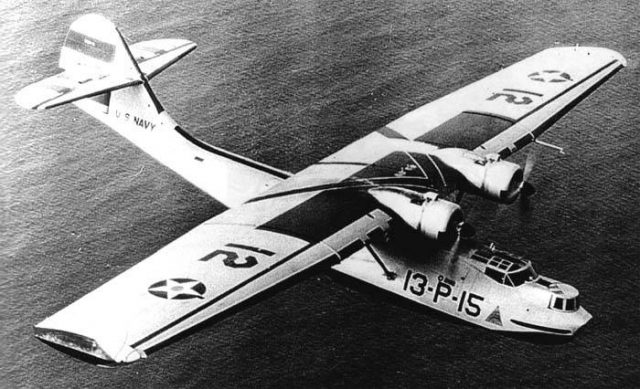
unbelievable, but from 3300 issued «Katalin» (built in the version of a flying boat and amphibian) about a hundred continue to fly today.
«Catalina» PBY flying boat named in UK, In November 1940 of the year, soon after, how the Royal Air Force received the first of these machines, purchased later in large quantities.
The plane was named after the resort island, off the coast of California. Name «Catalina» fully complied with the foreign aircraft naming system adopted in the RAF. When in 1941 The United States officially introduced a naming system for its aircraft, many names they borrowed from the British, including and «Catalina».
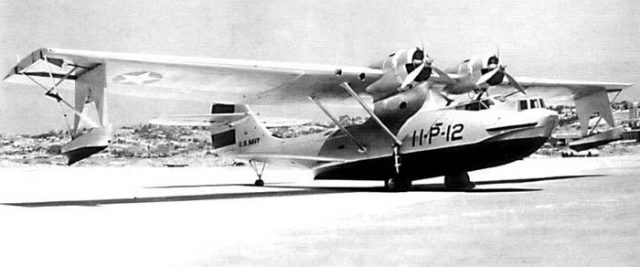
PBY in flying boat variant, built by Canadians for their Air Force (RCAF), received the designation CANSO, and in the amphibian version CANSO-A. Another little-known name for this aircraft was «Nomad» (nomad - nomad).
Generally, by the beginning of the war, by order of the US Navy, so many Catalins were produced, that the boat became the main seaplane of the American fleet.
Naturally, as soon as hostilities began against Japan, Catalina was called to service. The flying boat had to try on the role of a multifunctional aircraft of the widest scope, since the range of the PBY-4 was simply luxurious.
However, the first encounters between Catalinas and Japanese aircraft exposed the vulnerability of American flying boats.. The lack of armor protection for the crew and protected fuel tanks made them relatively easy prey for the Japanese..
The few surviving accounts of attacks on PBY groups never mention, so that the Americans try to maintain order and mutually support each other with fire.
And the point here was not the lack of experience of American pilots, everything was fine with this. The plane had a different problem: very unfortunate location of shooting points. Plus store-bought Browning heavy machine guns. Japanese pilots saw perfectly through huge blisters, when the shooter starts to change the magazine and learned to use the moment, mowing shooters.
Plus, the Catalin pilots did not have a view of the rear hemisphere at all.
Generally, how Catalina bombers and torpedo bombers ended very quickly.
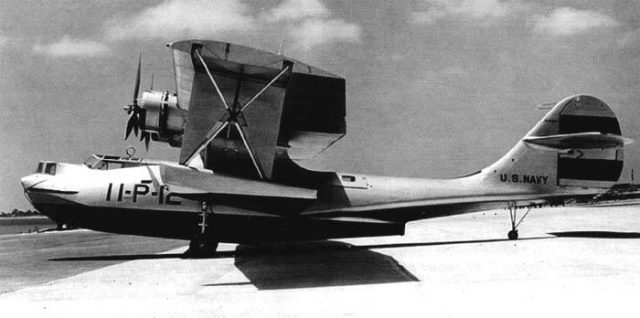
And here are the rescue «Catalina» became a symbol of life for the crews of downed aircraft, sunken ships and vessels. Rescue operations are codenamed «Dumbo» (Dumbo), named flying baby elephant from Walt Disney cartoon. At first, this name was used in radio talks., but then it firmly stuck to the rescuers.
It came to, that the Catalinas during the campaign in the Solomon Islands were allocated to help strike groups, patrolling in the area near the target.
PBY-4 also worked in the Russian north as a reconnaissance and rescuer. Besides, there was also a Soviet "Catalina", aka GST (Hydro Plane Transport), manufactured in Taganrog under license, but not with conventional motors, and licensed "Wright-Cyclones".
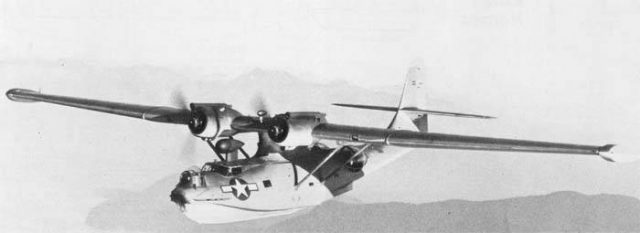
dignity: capacity, versatility, range of
disadvantages: overview, poor placement of weapons
3. Short S.25 Sunderland. United Kingdom
The coolest British sea lion. Can, of course, argue about it, who was more efficient, "Sunderland" or "Walrus", but the weight classes are different, and the guys on the Sunderlands did more things.
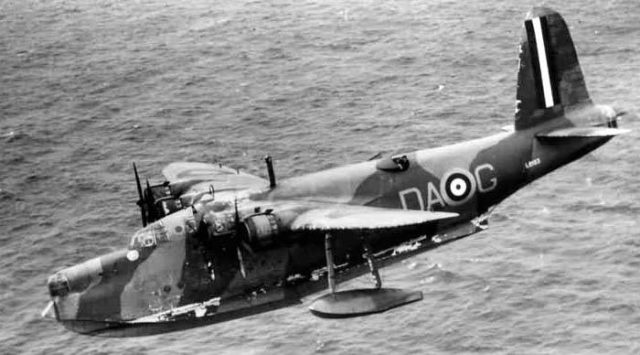
so, such a hefty flying boat. The boat here is somehow not in the weight category.
It's worth saying here, what «Sunderland» created on the basis of the already well-proven mail-passenger aircraft S.23 «Empire». I.e, can say, that a civilian aircraft was called up for military service and adapted to the conditions of military life.
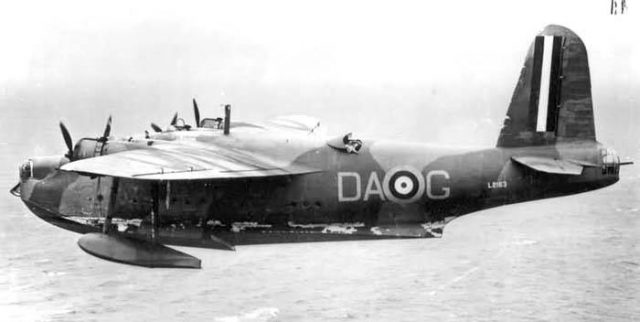
In fact, the mail plane turned out to be an excellent patrol. Not surprising, this boat already had all the necessary qualities: large double deck fuselage, due to which a long flight range was combined with good habitation conditions.
Little of, that the plane could take a lot of fuel, it also had simply magical conditions for the crew: on board were a galley, dining and sleeping compartment for six beds. no wonder, that envious people gave this plane a nickname «flying hotel».
in total: long flight time, excellent conditions for the crew, pretty good maneuverability for such a big car, a good overview and the ability not to save on every kilogram of cartridges - all these components made «Sunderland» excellent patrol and anti-submarine aircraft.
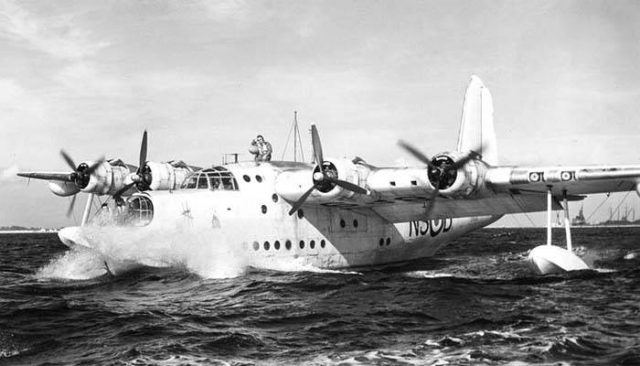
Sunderland had one very funny feature. The front rifle tower could move back along the rails, inside the fuselage. At the same time, something like a small deck with a fence was formed at the bow of the boat., with which it was convenient to carry out mooring.
Just a few words about weapons. The mountain of 7.7 mm machine guns was, of course, good deed, but as the war progressed, rifle-caliber Vickers were gradually replaced by large-caliber Brownings, which played a very positive role.
In general, Sunderland was a very difficult target., and Germans, and the Italians did not joyfully rub their hands at the sight of this car. S.25 could easily fight off anyone, another question, that not everyone was eager to fly so far from land, How did the Sunderlands pilots do it?.
Combat account S.25 opened 17 September 1940 of the year, when one of the aircraft of the 228th AE shot down an Italian flying boat «edging» Z.501.
Bombs are more difficult.. In general, the load in numbers looks very modest, understandable, that such an aircraft could take on board much more. British engineers categorically did not want to violate the strength of the bottom of the boat and the tightness. Because the bomb bays were made ... on the sides!
Bombs with the help of electric drives were put forward through hatches in the fuselage under the wing and dropped there. Then the drive rods retracted for new bombs. In a way, but justified.
Naturally, very good "Sunderland" showed itself as a transport seaplane. more precisely, tow truck. for example, of 28 000 British, evacuees from Crete, 14 500 took out these flying boats.
But the main combat mission for the Sunderlands was patrolling the sea and ocean areas in search of enemy submarines.. And in this S.25 more than succeeded.
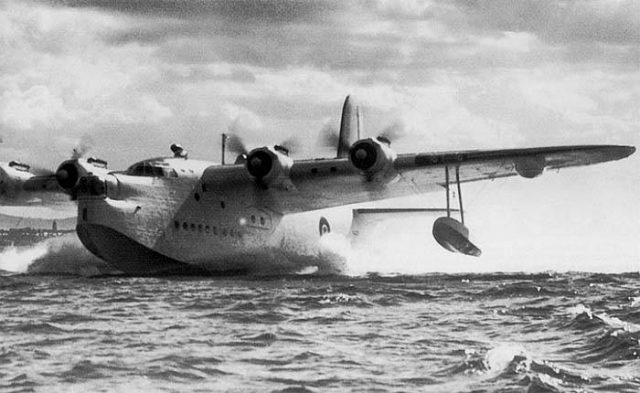
And the appearance in 1943 g. new anti-submarine radar ASV Mk.III allowed anti-submarine aircraft to move from convoy escort to offensive tactics, i.e, to attempts to find and intercept enemy submarines before they enter the combat deployment areas.
In total, the Sunderlands destroyed 26 Germanic «U-bots» (21 of which - independently). And how many attacks were thwarted by the mere presence of S.25 in the area of u200bu200bconvoy movement, hard to say. The fact, that German submarines, having on board radar signaling equipment, not in a hurry to attack.
And they served S.25 for a very long time. In Argentina they carried mail to 1967 of the year, and the record belongs to a former Australian seaplane, flying in French Polynesia back in 1970 year.
dignity: seaworthiness, weaponry, conditions for the crew, flight duration
disadvantages: perhaps, only a technically complex bomb release system.
4. CANT Z.501 Seagull. Italy
The Italian "Seagull" somewhat repeated the fate of its Soviet land namesake. I.e, finally and irrevocably outdated by the beginning of the war and was actually knocked out by enemy fighters, because they really could not oppose anything.
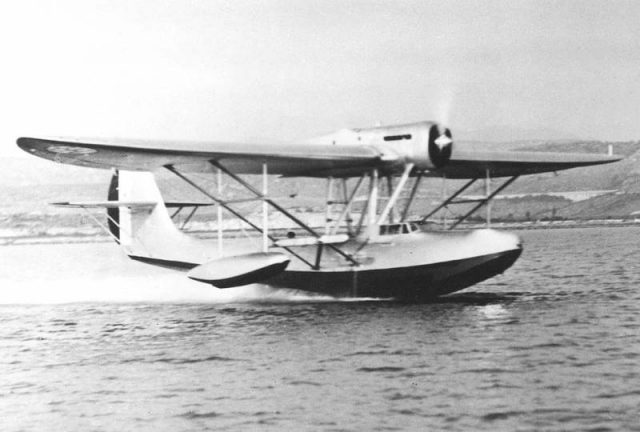
Nevertheless, the plane fought the whole war, from first to last (for Italy) day.
Before the start of World War II, the Italian fleet had more 200 Z.501 aircraft. Options are different, which is quite normal for a flying boat. This is the scouts, and bombers, and Recovery. There were even attempts to adapt the Z.501 to search for and destroy enemy submarines., but somehow it didn't work.
In general, the aircraft was uncharacteristic for the Italian aircraft industry.. One side, beautiful body, narrow and dynamic, on the other - a huge awkward wing, plopped on top. But this disharmony worked pretty well, the car flew well for its time.
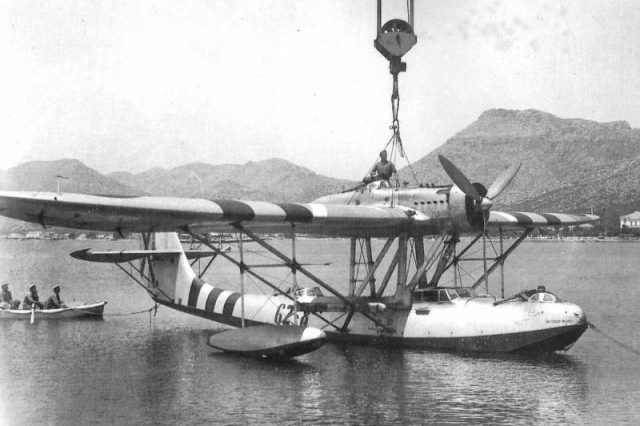
But the boat was often called not "Gabbiano", and "Mamayuto", "Oh, mommy!». According to legend, this is how a child screamed, seeing this plane for the first time. True or not - hard to say.
But the combat effectiveness was very low. And the reason for this was not aerodynamics, but mainly low survivability and low reliability of engines. The armament also left much to be desired., but for want of a better, Seagulls flew over the waves until the end of the war.
After the surrender in Italy's aviation, it remained 30 gïdrosamoletov. K I 1944 years, their number has been reduced to 24 - the rest remained in Nazi-occupied Northern Italy.
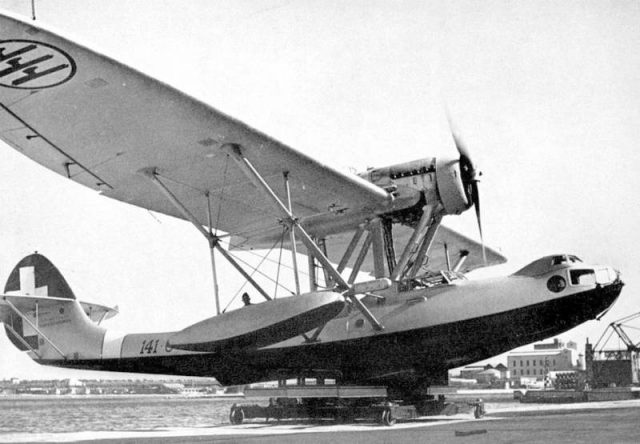
But the surviving planes flew up to 1950 of the year. Not ideal, but anyway.
dignity: released in a large series
disadvantages: maneuverability, reliability, speed, weaponry.
5. Latecoere Loire 130. France
With a little bit of regret, I state, that the most common French flying boat during the war years was the Loire 130 monoplane.
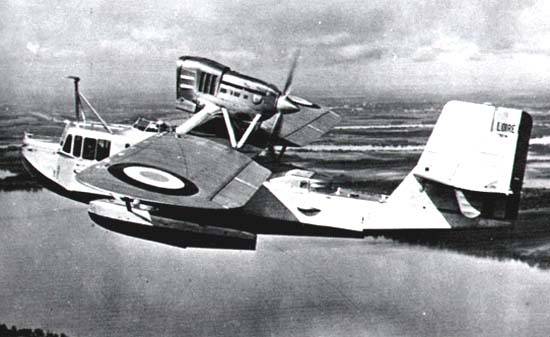
They built it according to the project as an ejection reconnaissance aircraft. Respectively, small and light. There were more significant cars in France, but they were produced in completely scanty series, from 1 to 10 machines. So, with all their desire to have at least some influence on the course of hostilities, they could not.
The Loire 130 flying boats began the Second World War on all French ships, who had catapults. From battleship to mother ship. Plus patrol squadrons in the Air Force.
After November 1942 g. all French warships lost their catapults, which were removed for, to accommodate more anti-aircraft installations. All boats "Loire 130" were "ashore", i.e, began to be used from a coastal base.
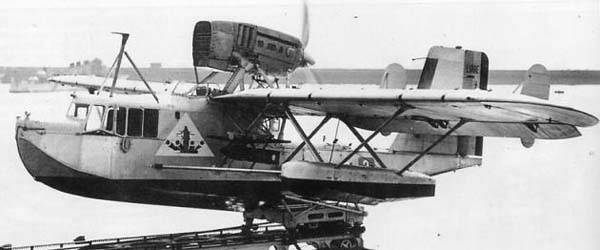
Naturally, first of all, they began to be used as patrol aircraft to detect and hunt for submarines. Another question, what could two bombs do 75 kg weight.
Most active aircraft were used in Vichy aviation. And, fought, as is typical for French aircraft, on both sides of the front. "Loire", remaining in the Vichy Air Force, could well fight with the Loire, who flew to the British from Tunisia, Lebanon and Martinique.
On the whole,, "Loire 130" became the most massive French flying boat of the Second World War. Despite the low speed, he was dependable, ease of use and flexibility of application.
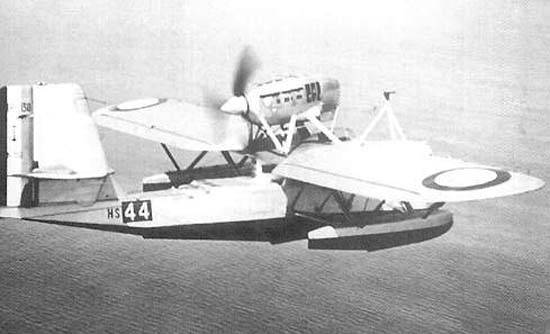
And real, this plane was very versatile. The car was truly multi-purpose, could take off from coastal and coastal bases, from ship catapults. "Loire 130" could be used as a reconnaissance, transport, search and rescue aircraft.
dignity: plain, managed, reliable.
disadvantages: speed, weaponry.
6. Blohm and Voss BV.138. Germany
This boat can be safely put in one row with the best representatives of this class of aircraft, because then, what could BV.138 do, could not all. good seaworthiness, allowing you to take off and land with a wave more 1 m, excellent flight range, show, that VV.138 is an outstanding aircraft for its time.
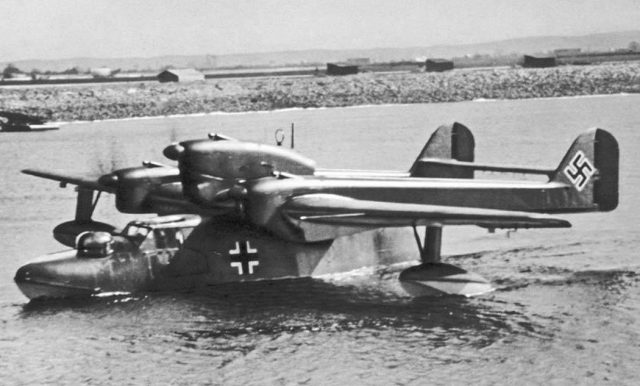
Little of, that VV.138 proved to be an excellent patrol aircraft, extremely durable, not afraid of the waves, no machine guns, as well as its outstanding seaworthiness, together with the ability to stay at sea for a long time, allowed to use it like this, how not a single aircraft of that war was used: from ambush.
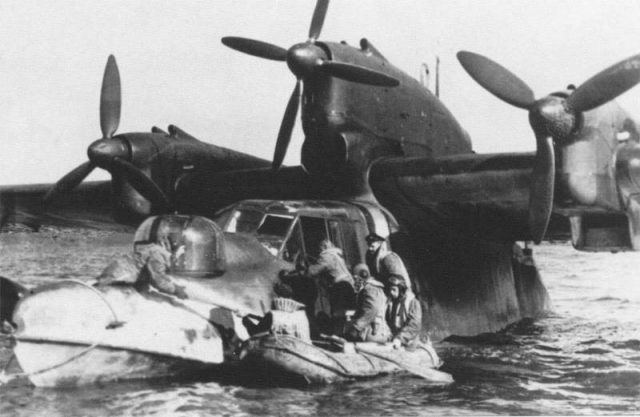
It was done like this: ВV.138 flew to the Atlantic, landed on the water and drifted for two or three days before the message about the passage of the Allied convoy. After that, VV.138 took off and directed submarines at the convoy. Can attack myself, but aiming a “wolf pack” with one plane was much more deadly, than a few bombs or a torpedo.
The designers were able to do so, that even a rather complex repair could be carried out on the high seas. And VV.138 refueled from submarines easily and naturally, if only the weather allowed.
With a maximum fuel supply, VV.138 could be in the air up to 18 hours, although with normal only 6.5.
The field of action for VV.138 steel and the Arctic, and the Baltic States, and the Atlantic. Everywhere, where eyes and clear guidance of other forces were needed.
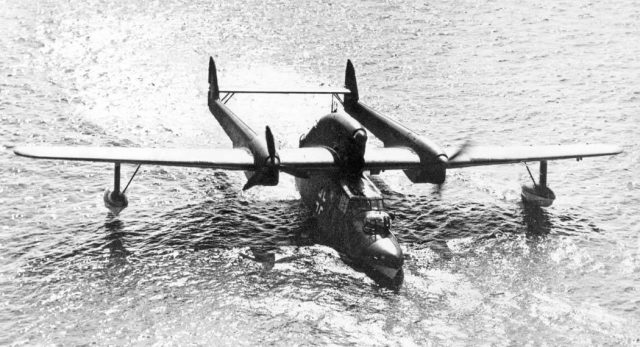
In the north at 1942 year the Germans concentrated in Norway 44 units VV.138, in fact, not a single convoy could go unnoticed VV.138. Thus, effective detection and subsequent tracking of convoys was ensured.. It is worth noting, that the losses from the air defense actions of the ships of the convoys were small.
true, almost immediately, the allies began to include aircraft carriers in convoys, whose planes somewhat hampered the work of German intelligence officers. but, even in this case, it was not easy to neutralize the work of V.138. Fixed case, when the flying boat withstood a 90-minute battle with the Sea Hurricanes and managed to return to base, true, with serious damage.
Cannon firing sectors were too well distributed, which could inflict damage on enemy fighters due to the range of the latter's machine guns. There were also cases of VV.138 attacks on escort aircraft, especially for seaplanes.
TO 1942 year, the insolent Germans created bases for VV.138 on Soviet territory, on Novaya Zemlya. The base was organized from submarines, anticipated, that the planes will conduct reconnaissance of convoys in the Kara Sea, operating from Novaya Zemlya. From this base, VV.138 made reconnaissance flights east to Yamal and to the north of the eastern part of the Urals for several weeks..
Of course, by the end of the war, the use of rather unhurried flying boats in conditions of complete enemy air superiority had become an extremely risky business. But in the Arctic, VV.138 operated until the very end of the war.
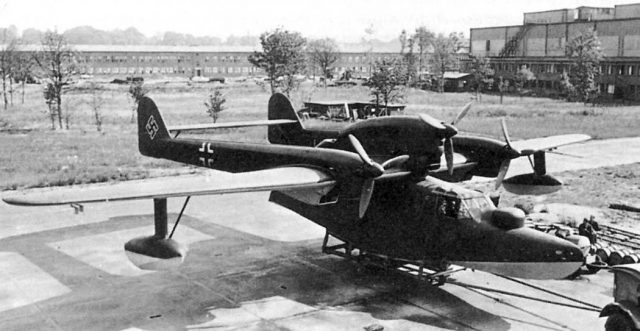
And VV.138 became an airplane, who wrote one of the last lines in the history of the Luftwaffe. It was Lieutenant Wolfgang Klemusch, who flew on this machine, who received 1 May 1945 of the year the order to fly on his BV.138 to Berlin at night, land on the lake and pick up two very important couriers. Klemush successfully landed, despite heavy shelling, but, as the couriers were unable to present any supporting documents, the pilot refused to take them on board, but loaded 10 wounded and returned to Copenhagen.
It subsequently became clear, that these couriers were supposed to deliver Hitler's testament and last will.
In general, the aircraft turned out to be very functional and multifaceted., that is why he was able to win the whole war.
dignity: strength, seaworthiness, weaponry, flight duration
disadvantages: maneuverability and speed.
7. Kawanishi H8K. Japan
The creation of this monster began long before World War II., but had to go through a whole series of patterns, to make one of the best flying boats. Absolutely no exaggeration, H8K can be assessed in this way.
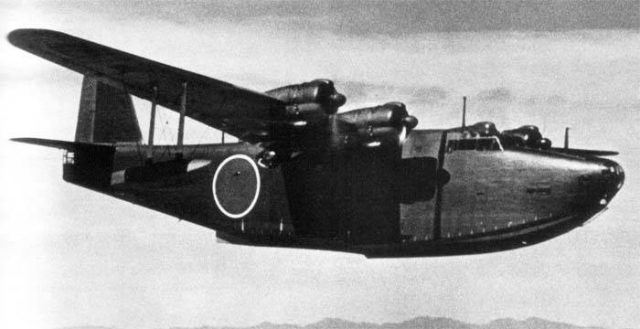
In general, the Japanese created a lot of things like that, that does not fit into the global canons. Especially when they were pressed by the Washington Treaty, strange inventions rained down like an avalanche.
And all these inventions were not subject to treaty restrictions., because they really did not have a class. These are super destroyers, and huge oxygen torpedoes "long lances" for them, aircraft carrier patrol submarines, heavy cruisers and battleships, high-speed hydrocarriers-carriers of dwarf submarines, huge minelayers, torpedo cruisers (from 40 torpedo tubes each) and other benefits.
But, perhaps, the closest attention was paid to a new kind of naval weapons - carrier-based aviation, coastal and seaplanes.
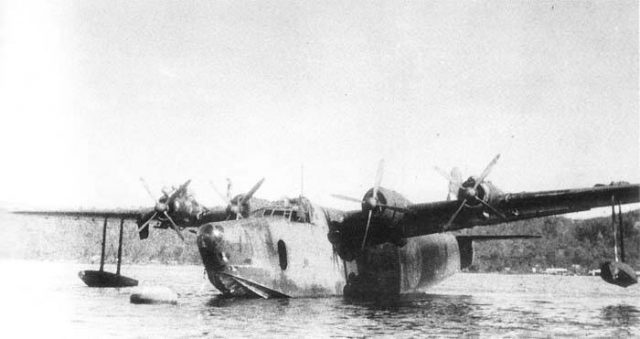
Japan really entered the war, having the world's best carrier-based fighters, dive bombers and torpedo bombers. The coastal aviation of the fleet received torpedo bombers with simply a fantastic range, and heavy strike-reconnaissance flying boats conducted strategic reconnaissance throughout the Pacific Ocean.
This luxurious device was created by the firm «Kawanishi Kokuki K.K.». fun, but the lion's share of the shares belonged to the British company Short Brothers, albeit in a slightly veiled way. And Short Brothers was a gentle and reliable supplier to Her Majesty the Queen's Navy.
Nothing personal, just business: the Japanese got access to the latest achievements of the English hydro-aviation industry, a Short Brothers did not pay taxes on the sale of licenses to Japan, so the similarity of circuit diagrams and some technical solutions of H8K and Sunderland is not surprising.
But I already told, what Japanese engineers did from foreign-made samples (cannons and machine guns), and what masterpieces were obtained at the same time. Got it this time too.
PBF, given at the end of the article, immediately bring the plane into the category of perfect.
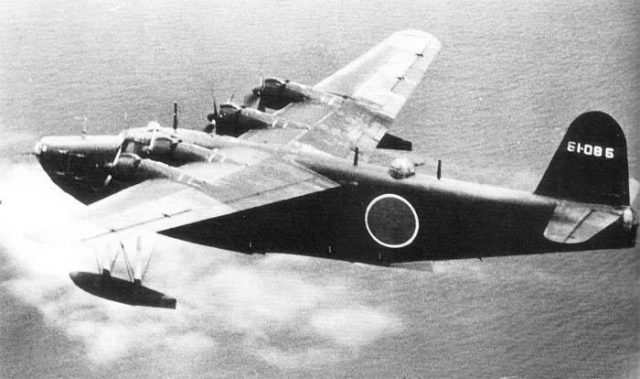
Outstanding parameters immediately identified the boat in the category of strategic reconnaissance. But it was also a very toothy plane., capable of inflicting heavy blows.
Two such flying boats took part in a little-known, but a unique operation - the second strike on Pearl Harbor. The purpose of the operation was defined as reconnaissance of the harbor and the bombing of the oil storage of the main base of the American fleet., Vice Admiral Nagumo Chuichi, who was practically not injured during an aircraft carrier raid.
The crews of Lieutenants Hashizumi and Tomano of the Yokohama Air Corps, with four 250-kg aerial bombs in each aircraft, flew from Wautier Atoll to the French Frigate reefs north of the Hawaiian Islands, where they refueled from submarines and continued their flight to Pearl Harbor.
Bad weather over the target forced the Japanese to bomb through the clouds., so it's not surprising, that there was no result. The second attempt to carry out this operation ended in the death of the crew of Lieutenant Tomano during additional reconnaissance of the target - he was shot down by fighters, and soon the American fleet took control of the French Frigate reefs.
The capabilities of the boats have been constantly improved. One of the first in the history of the Japanese aircraft industry, H8K aircraft received multi-layer rubber protection for fuel tanks., and the seats of the pilots and the commander of the ship are armored backs.
The plane fought the whole war. H8K engaged in exploration in the Pacific and Indian Oceans, bombed Colombo, Kolkata, Trincomalee and targets in Western Australia, supplied island garrisons isolated in the ocean, searched for and sank submarines.
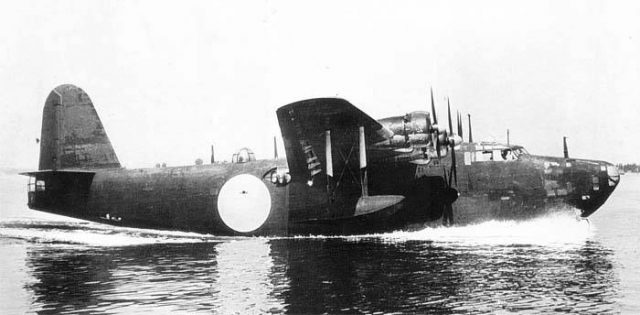
To do this, on a small amount of H8K in 1944 g. installed search radars. The effect was, at least seven American submarines went to the bottom with direct «promoting» Japanese flying boats.
And H8K was recognized as a very tough nut to crack for fighters. Simply insane survivability, coupled with the most powerful defensive weapons and the fanaticism of the Japanese crews, claimed the lives of more than one American and British pilot, trying to destroy the plane. It happened, to make H8K fall, 5-6 fighters used up all their ammunition.
But in the second phase of the war and fighters, and the allies had plenty of ammunition, so by the time Japan surrendered, only two flying boats of this type had survived. All seaplanes of the transport modification L were also destroyed..
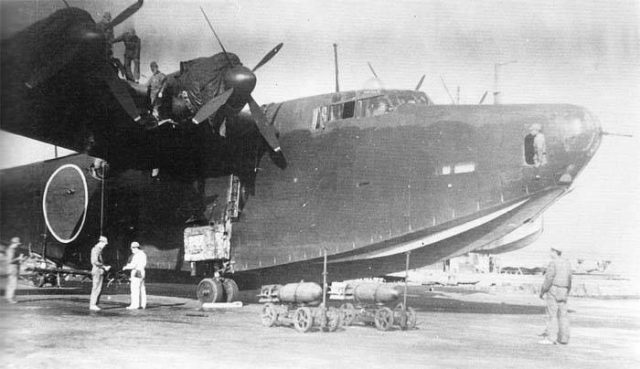
by the way, it is H8K that participates in one of the sad pages of the imperial fleet.
In April 1943 g. American pilots shot down two G4M1 bombers, on which several officers of the headquarters of the United Fleet, led by the commander-in-chief - Admiral Yamamoto Isoroku, were killed. The Japanese command of the Navy decided to provide more reliable «bulletproof» planes. The choice fell on the H8K flying boat. By autumn, the first aircraft was modernized, designated H8K1-L m.31. A sort of VIP option, able, in addition to the crew, to transport comfortably along 29 passengers.
They were reliable cars., did not cause any complaints from the crews, not from the passengers, but for the second time the headquarters of the Combined Fleet was lost along with the new commander, Vice Admiral Koga Mineichi, namely on board H8K2-L. Commander-in-Chief's aircraft 1944 g. caught in a typhoon while flying from Palau to Davao and went missing.
dignity: reliability, speed, weaponry, range of, seaworthiness.
disadvantages: perhaps, no.

Of course, flying boats were not so common, like fighters and bombers, but they contributed to the victory of one side or another. The only question is, who is better.
/Roman Skomorokhov, topwar.ru/







